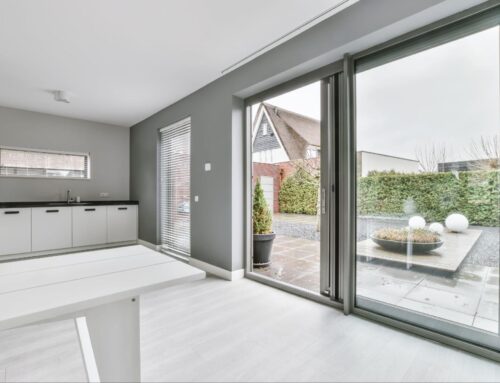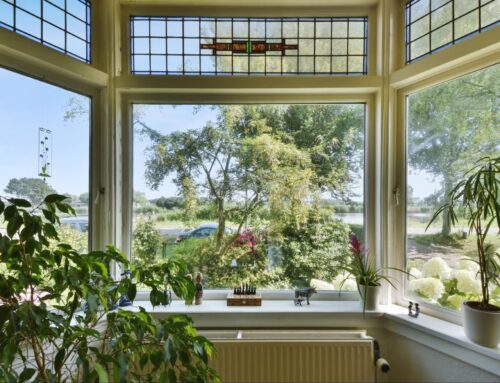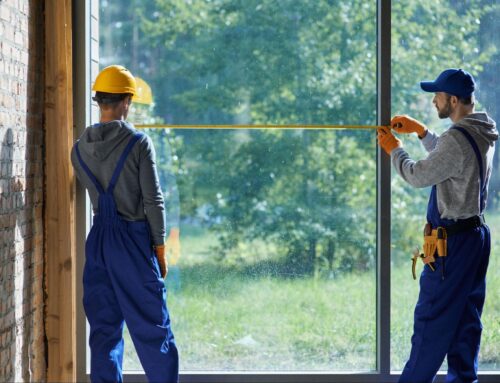Glass exterior doors offer elegance, natural light, and an inviting entrance to any home. Over time, however, these doors may begin to show wear, develop functional issues, or lose their aesthetic appeal. Understanding how and when to replace glass exterior doors ensures your property remains stylish and secure. Beyond improving curb appeal, a well-timed replacement enhances security, energy efficiency, and overall property value.
Signs Your Glass Exterior Doors Need Replacement
Determining whether replacement is necessary involves carefully assessing your door’s condition and functionality. While minor issues can often be repaired, delaying critical replacements may compromise both security and energy efficiency. Here are the most common warning signs that indicate it’s time for an upgrade:
Visible Damage or Cracks
Even minor cracks or chips in the glass panel can expand over time, creating potential safety hazards. These imperfections often indicate structural weaknesses that compromise the door’s durability. For optimal safety and aesthetics, replacing damaged doors is typically more cost-effective than repeated repairs.
Drafts and Poor Insulation
If you notice drafts or rising energy bills, your door’s insulation has likely deteriorated. Modern energy-efficient models not only resolve these issues but also significantly enhance indoor comfort throughout seasonal changes.
Difficulty Opening or Closing
Misaligned hinges, worn-out tracks, or swollen frames often cause operational problems. Since these issues typically worsen over time, replacement usually proves more practical than continuous adjustments.
Outdated Design
As aesthetic preferences evolve, older doors may clash with your home’s current style. Contemporary replacements modernize your property’s appearance while incorporating advanced technology and energy-saving features.
Security Concerns
Older doors with thin glass are vulnerable to breaches. Modern options featuring tempered or laminated glass provide superior protection while offering homeowners greater peace of mind.
Key Reasons to Replace Glass Exterior Doors
While glass exterior doors beautifully combine functionality and aesthetics, several situations make replacement the smart choice. Whether addressing structural issues, security vulnerabilities, or simply upgrading your home’s appearance, understanding these key reasons helps homeowners make informed decisions.
Environmental and Noise Concerns
Today’s advanced glass doors incorporate soundproofing and UV protection for enhanced comfort. For instance, laminated glass significantly reduces outdoor noise, while Low-E glass minimizes harmful UV rays without sacrificing natural light.
Storm Damage
Severe weather often leaves glass doors with cracks or structural weaknesses that affect performance. Durable, weather-resistant replacements not only restore protection but also better withstand future extreme conditions.
Frequent Repairs
When doors require constant maintenance for hardware, seals, or frame issues, the cumulative costs often exceed replacement expenses. In such cases, investing in a new door provides a more reliable long-term solution.
Faded or Discolored Glass
Prolonged sun exposure frequently causes unsightly discoloration that obscures views. Modern glass with UV-resistant coatings restores clarity while preventing future fading.
Enhanced Technology and Smart Features
Contemporary doors now integrate innovative features like smart locks, motion sensors, and even built-in blinds. These technological advancements improve convenience, security, and energy efficiency simultaneously.
Choosing the Right Replacement Glass Exterior Door
Selecting the perfect replacement involves balancing style, durability, and functionality. The ideal choice should complement your home’s architecture while meeting practical needs for security, energy efficiency, and maintenance.
Material Options
Each framing material offers distinct advantages depending on climate, aesthetic preferences, and maintenance tolerance:
Aluminum Frames
Ideal for modern homes, aluminum combines lightweight durability with excellent weather resistance. While it resists rust and corrosion, its insulation properties may lag behind other materials.
Wood Frames
Timeless wood frames add warmth and character, though they require regular sealing or painting to prevent warping and moisture damage. When properly maintained, they offer unmatched natural beauty.
Vinyl Frames
As an affordable, low-maintenance option, vinyl performs well in various climates. Although less premium in appearance, its moisture resistance and energy efficiency make it a practical choice.
Fiberglass Frames
Mimicking wood’s aesthetic without intensive upkeep, fiberglass resists warping and weather damage exceptionally well. This makes it particularly suitable for harsh climate conditions.
Glass Types for Optimal Performance
Modern glass technologies allow customization based on specific needs:
Tempered Glass
Four times stronger than standard glass, tempered versions shatter into safer, blunt pieces—an ideal solution for homes with children or high-traffic areas.
Laminated Glass
Featuring a protective vinyl interlayer, this type remains intact when broken, enhancing security while reducing noise transmission significantly.
Low-E Glass
Low-emissivity glass reflects heat while transmitting natural light, improving energy efficiency—especially beneficial in extreme climates.
Frosted or Tinted Glass
These options provide privacy without sacrificing light; frosted glass obscures views while tinted versions reduce glare and block UV rays.
Popular Door Styles
The right style enhances both functionality and visual impact:
Sliding Doors
Operating on horizontal tracks, these space-saving doors maximize views and natural light—perfect for connecting indoor and outdoor living areas.
French Doors
Their classic double-door design adds traditional elegance while providing generous glass panels for abundant sunlight.
Pivot Doors
For contemporary spaces seeking drama, pivot doors rotate on a central axis rather than side hinges, creating a striking architectural statement that commands attention.
Step-by-Step Guide to Replacing Glass Exterior Doors
Proper installation ensures optimal performance and longevity. Follow this comprehensive process for best results:
Preparation Phase
Begin by carefully measuring the existing doorframe and removing the old door. Inspect the frame for damage—any necessary repairs or reinforcements should be completed before proceeding. Gather all required tools and materials including shims, screws, and weatherproofing supplies to streamline the installation.
Installation Process
First, position the new frame in the opening, using shims to ensure perfect alignment before securing it with screws. Next, insert the glass panel or preassembled door, followed by all necessary hardware. Finally, apply high-quality weatherproofing materials to seal edges against drafts and moisture infiltration.
Finishing Touches
After installation, thoroughly test the door’s operation and make any necessary adjustments to hinges or hardware. Clean all glass and frame surfaces for a polished appearance, then install any decorative trims or handles. Confirm all seals are properly installed to maximize energy efficiency.
Final Considerations for Door Replacement
When damage, inefficiency, or outdated design make repairs impractical, replacement becomes the wise choice. Modern glass exterior doors offer superior safety, energy performance, and aesthetic appeal that enhance your home’s value and comfort.
For more expert advice on maintaining and upgrading your glass features, visit our Resilience Glass blog.








